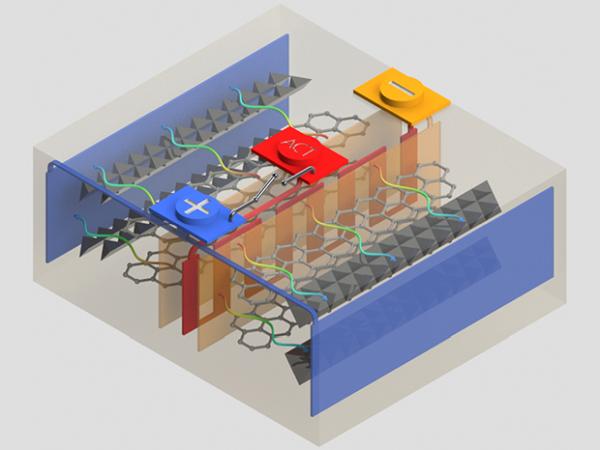A new “all-climate” lithium-ion battery can rapidly heat itself to overcome freezing temperatures with little sacrifice in energy storage capacity and power, researchers say.
This advance might enable applications for which high-performance batteries are needed in extremely cold temperatures, such as electric cars in cold climates, high-altitude drones, and space exploration. EC Power is now creating all-climate battery cells in pilot-production volumes that can be put directly in vehicles, says study lead author Chao-Yang Wang, a mechanical and electrochemical engineer at Pennsylvania State University.
Lithium-ion batteries not only can suffer problems from overheating, but they also typically experience severe power loss at temperatures below zero degrees Celsius. The consequences of this weakness include slow charging in cold weather, limited regenerative braking, the need for larger, more expensive battery packs to start cold engines, and the reduction of vehicle cruise range by as much as 40 percent, researchers say.
Previous attempts to help lithium-ion batteries perform better at low temperatures have considered additives to the electrolytes that connect the electrodes of batteries. However, such additives can release gases at high temperatures that reduce battery life. Another strategy to keep batteries working in the cold involves externally insulating and heating the batteries, but external insulation and heaters make batteries larger and heavier, which is unwelcome in such applications as high-altitude drones where space and weight are concerns.
Now researchers have developed what they call an all-climate lithium-ion battery that can heat itself up from below freezing without the need for electrolyte additives or external heating devices.
The new device adds a 50-micrometer-wide sheet of nickel foil to its interior. This design allows the battery to divert electrical current through the foil at freezing temperatures to produce heat with about 90 percent energy efficiency. Once this heating effect raises the internal temperature of the battery above freezing, a switch is triggered, and the battery reverts to normal operations.
“A thin nickel foil ends the era of batteries not working at low temperatures,” Wang says. “Our project has been a multi-year effort and we went through many sophisticated ideas and synthesis techniques, but at the end we were surprised that a thin nickel foil works so well and involves minimal alterations.”
The prototype was capable of warming from -20 to zero degrees Celsius in roughly 20 seconds and -30 to zero degrees Celsius in roughly 30 seconds while consuming only 3.8 and 5.5 percent of its energy storage capacity, respectively. Such heating could help this all-climate battery provide much more usable energy, and much longer cruising ranges for electric cars, than standard lithium-ion batteries in extreme cold, the researchers say.
For instance, the researchers calculated their battery could provide 102 watt-hours per kilogram at -40° C, whereas batteries without the nickel foil could only yield 0.3 watt-hours per kilogram at that temperature. Similarly, they note their battery could five to six times more power at -30° C than batteries without the nickel foil.
For more detail: Lithium-Ion Battery Warms Up, Operates In Subzero Temperatures


